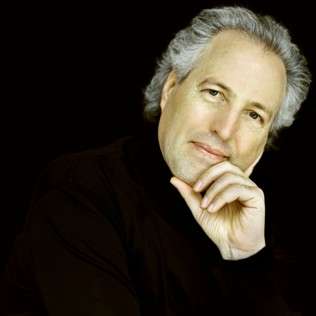|
Back
“Ging heut Morgen übers Feld” New York
David Geffen Hall, Lincoln Center
02/15/2017 - & February 16*, 17, 18, 2017
Ludwig van Beethoven: Concerto for Piano and Orchestra No.1 in C major, Op.15
Gustav Mahler: Symphony No. 1 in D major
Inon Barnatan (piano)
New York Philharmonic, Manfred Honeck (conductor)

M. Honeck (© Felix Broede)
“Let me hide at least a petal
In the sleeve of my flower-viewing robe
That I may remember the spring.”
Tanizaki Junichirō, The Makioka Sisters
In 2004 the Pittsburgh Symphony announced that it had hired three conductors to share the leadership role. What could possibly go wrong? In 2007 they appointed Manfred Honeck (not one of the original three) as their new music director and have since renewed him until at least 2020. He is an Austrian who played in the Vienna Philharmonic (his brother Rainer is a leader there) and in the Vienna State Opera Orchestra as well. What he learned on the Ringstrasse has served him in good stead in Western Pennsylvania and his association with the music of Mahler makes him a fine choice – always a dangerous position to be in – to lead today’s concert.
But first Beethoven. This performance of the First Concerto (the second in order of composition) was surprisingly unsatisfying. The ensemble was much too large for an accurate Beethovenian performance and was allowed by its leader to play quite loudly and intrusively. Mr. Barnatan was attempting to enunciate softly, but Honeck would have none of it, leading his forces in a battle between heavy weight and delicacy, reminiscent of another New York Philharmonic dust-up between Leonard Bernstein and Glenn Gould. Barnatan was relentless in attempting to phrase with subtle taste, however the loud instrumental forces might have made him nervous as he began to make uncharacteristic fingering mistakes that led to uncomposed dissonances. The ensemble was simply too boisterous for a piano played piano. This rendition was death by a thousand cuts, many small transgressions leading to a sloppy and overblown (sometimes literally) performance. Often after an opening concerto there is an encore, but this day neither Mr. Barnatan nor Mr. Honeck was feeling it. At intermission I was a little apprehensive.
That Mahler sounds like the movies is an old chestnut that can be debated for hours, but there is no question that his music is employed in more films than any other composer’s except perhaps Beethoven or Wagner. Examples include Shutter Island, Children of Men, Time Bandits, The Honeymoon Killers and many others as well as (of course) Bride of the Wind, Death in Venice and Ken Russell’s Mahler.
Each Mahler symphony has moments of mnemonic exploration. The first movement of the Symphony #1 recalls the second song of his Lieder eines fahrenden Gesellen (Songs of a Wayfarer) as one of its main themes. Mahler, like Beethoven, was well aware of his place in music history (what was taken for arrogance in his day now seems like remarkable prescience) and, even at this early stage, recreates the experience of memory by quoting from his previous material.
Watched over by some helpful star, Maestro Honeck delivered the absolute best live rendition of this Mahler symphony that this reviewer has ever experienced (and there have been many of them). He added his own touches to the score, leading his now giant (or should we say “Titanic”?) orchestra through many personal phrasing decisions and rubato maneuvers that are certainly not in the printed edition. This ploy led to a very personal interpretation that was very affecting. The second movement was superbly idiosyncratic and very Viennese.
The sounds of nature and the horn calls of the first movement come back as ghastly childhood nightmares in the third movement, the Funeral March in Callot’s Manner. Here the children’s song Frère Jacques (Mahler would have known it as Bruder Martin) is distorted into a grotesquerie inspired by the engraving, which all Austrian children knew, by Schubert’s friend Moritz von Schwind of the woodland creatures marching back home with their kill, a hunter in a makeshift casket tied to poles. Sigmund Freud, after treating him for crippling depression, wrote that “Mahler thought that...deep tragedy and superficial entertainment were tied together indissolubly in his soul.”
Here Honeck was in his glory, bringing out inner voices previously left buried. And the color in the finale was spectacular. I loved every nuance but do have one cavil. This may seem like a small point, but the horns standing at the conclusion of the work is often overlooked by conductors. Here the players did indeed stand at the proper time, but rather than spring up as a group, they stood up individually and sluggishly like a group of men (and one woman) going into a police line-up. Americans in general are not good at stage deportment and New Yorkers are far down on the image of respect scale. Here it matters, and the lackadaisical movement of these players told a side story in dumbshow. Overall, this was a confounding concert. Hopefully we will see more of Mr. Honeck down the road.
Fred Kirshnit
|